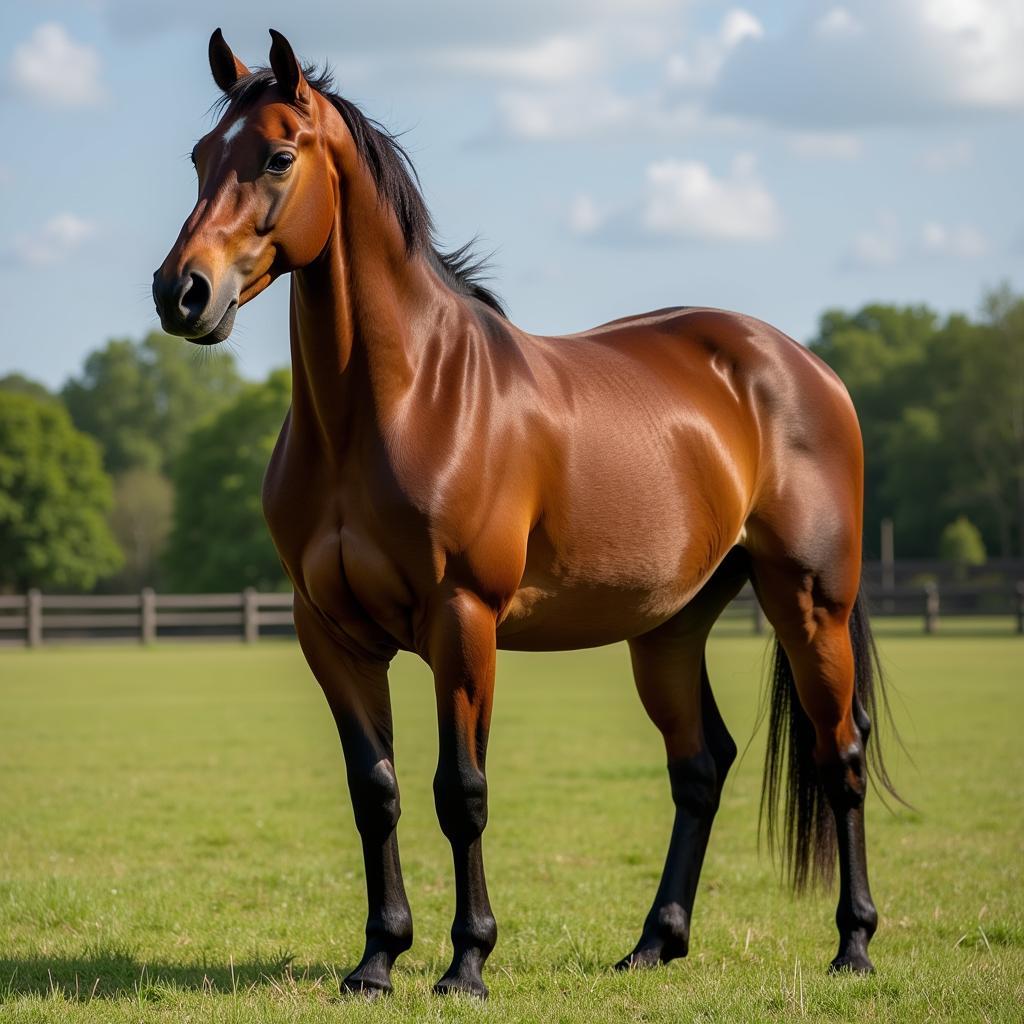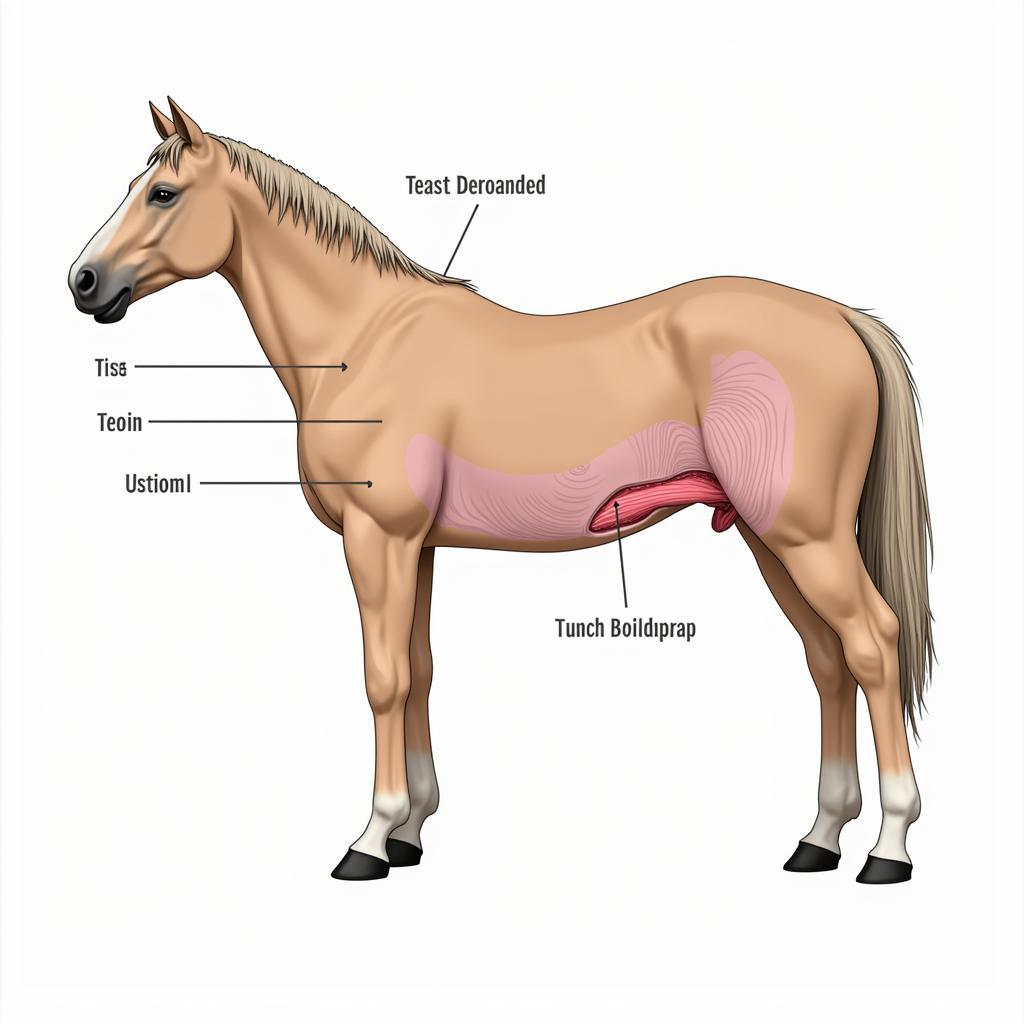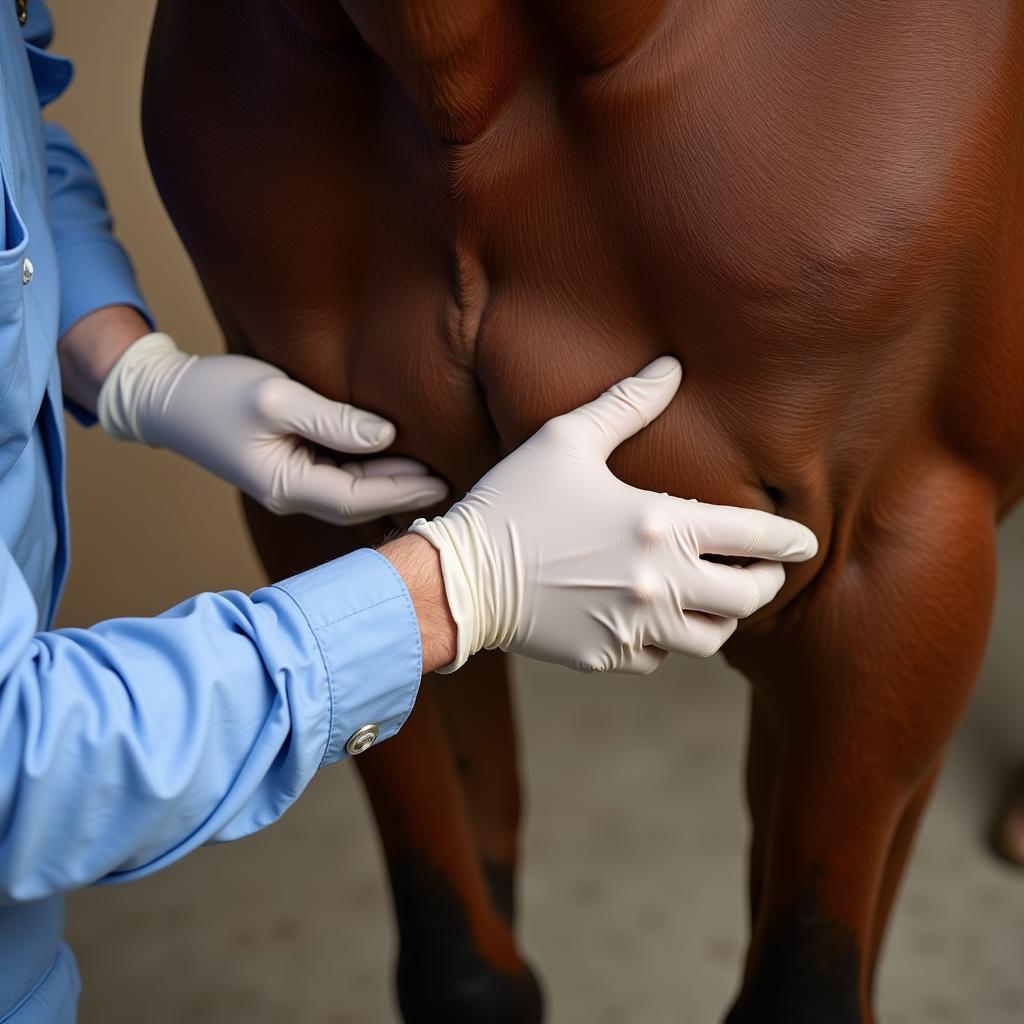The term “Massive Horse Balls” might spark curiosity, but it’s essential to approach the topic with sensitivity and a focus on horse health and well-being. While the phrase might seem humorous at first glance, it often refers to a genuine medical condition that requires attention and care.
 Stallion with Prominent Testicles
Stallion with Prominent Testicles
Exploring the Anatomy of a Stallion
To understand the significance of testicular size in horses, it’s crucial to delve into the basic anatomy. A stallion, the male horse used for breeding, possesses two testicles housed in a sac called the scrotum. These testicles are responsible for producing sperm, the male reproductive cells essential for fertilization.
 Diagram of Male Horse Reproductive System
Diagram of Male Horse Reproductive System
Factors Influencing Testicular Size in Horses
Several factors can influence the size of a horse’s testicles. These include:
- Breed: Certain breeds are genetically predisposed to having larger testicles. For instance, draft horse breeds like Shires and Percherons are known for their substantial testicular size compared to lighter breeds such as Arabians.
- Age: As a stallion matures, so do its testicles. Typically, a stallion reaches full testicular development between four to five years of age.
- Nutrition: A balanced diet rich in essential nutrients plays a vital role in overall horse health, including testicular development and sperm production.
- Overall Health: A healthy stallion is more likely to have well-developed testicles. Any underlying health conditions can negatively impact testicular size and function.
When Large Testicles Become a Concern
While variations in testicular size are normal, excessively large testicles, a condition known as macro-orchism, can sometimes indicate an underlying health problem.
 Veterinarian Conducting a Stallion Exam
Veterinarian Conducting a Stallion Exam
These problems can include:
- Tumors: In rare cases, testicular tumors can lead to significant enlargement of one or both testicles.
- Hormonal Imbalances: Disruptions in the horse’s endocrine system can affect testicular size and function.
- Infections or Inflammation: Infections like orchitis (inflammation of the testicles) can cause swelling and discomfort.
Seeking Veterinary Expertise
If you notice any unusual swelling, asymmetry, or discomfort in your stallion’s scrotal area, it’s crucial to consult a veterinarian immediately. They can conduct a thorough examination, determine the underlying cause, and recommend appropriate treatment options.
Conclusion
Understanding the factors that influence testicular size in horses empowers horse owners to provide optimal care for their animals. While variations are normal, any significant deviations from the norm warrant veterinary attention. By addressing potential health concerns proactively, we can ensure the well-being and reproductive health of our equine companions.
Remember, when it comes to your horse’s health, knowledge and timely veterinary care are paramount. If you have any concerns, don’t hesitate to reach out to our team at Justus Horses USA. Call us at 0772127271, email us at [email protected], or visit our facility located at QGM2+WX2, Vị Trung, Vị Thuỷ, Hậu Giang, Việt Nam. We’re available 24/7 to assist you and your equine partners.